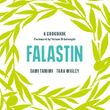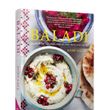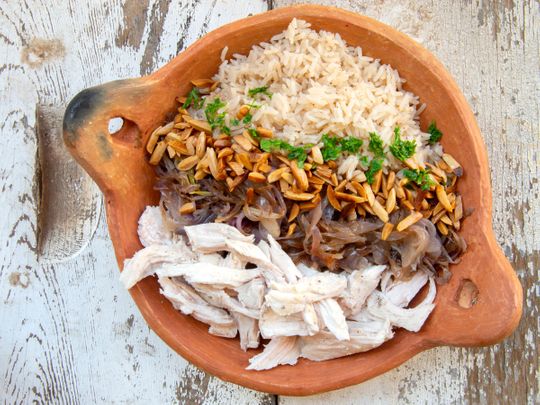
Image Credit: Shutterstock
If there were an award for The Most Resilient Cuisine, the recipient would be Palestinian.
Powering through decades of conflict, this under-represented cuisine might have lost many dishes along the way. But it’s also made its presence felt with many beloved dishes – like the musakhan, a sumac and saffron-spiced piece of chicken that has made its way into hearts worldwide. Or freekeh, a green wheat supergrain, usually served with meat. And maqluba, the upside down meat-rice dish.
A centuries’ old cuisine influenced by many cultures and trade, Palestinian cuisine has a menu that firmly has its roots in tradition and local ingredients. It also has a crop of chefs who are now fighting hard to bring Palestinian tastes to more and more palates worldwide.
So what exactly are the tastes and traditions that characterise the cuisine?
UK-based Palestinian chef and restaurateur – and James Beard award winner (an annual award that recognises culinary professionals) – Sami Tamimi says though a lot of food across the Middle Eastern region was similar, Palestine had two ports and a lot of trade, so was influenced by countries like India, Iran and north Africa. “Because of where the place is situated, it was always influenced by other cuisines; things were imported to the area and locals would adapt it to their own tastes and flavourings.”
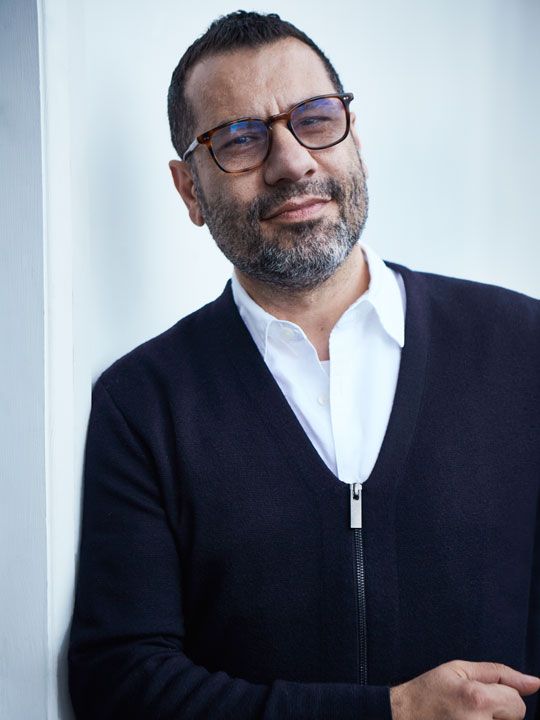
Image Credit: Supplied/Jenny Zarins
Palestinian food has always been connected to the land, the author of several cookbooks including the latest, Falastin, says, and most Palestinians have a farming background. “Wheat and root vegetables featured, and bread did too, but before rice was introduced they cooked with wheat, cracked wheat, bulghur, lentils and pulses. It’s been a lot about foraging as well – greens and herbs and roots and leaves, even flowers are part of the diet.”
.
And Tamimi doesn’t mean leaves as just a garnish, à la parsley – “they’d have just a leaf and make a whole meal of it!”
Just like Tamimi, Chef Salam Dakkak from Dubai’s Bait Maryam restaurant talks of Palestinian cuisine as being rooted in customs, traditions and seasons for centuries. “Whatever vegetable or fruit is growing during a specific season, Palestinians made the most of it at that time. Palestinian cuisine also followed cultural traditions whether it was around religion or other traditions built over the years.”
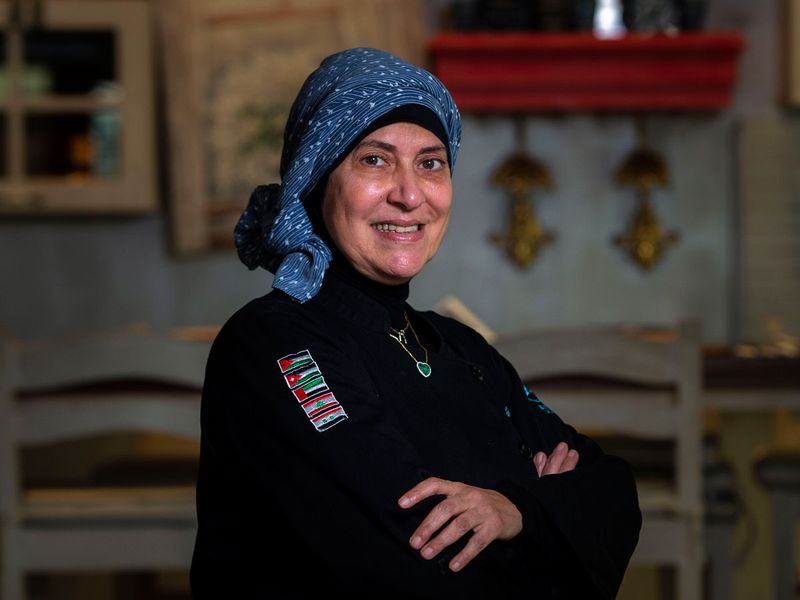
Image Credit: Ahmed Ramzan/Gulf News
Palestinian-British chef Joudie Kalla, bestselling author of Palestine on a Plate and Baladi (@palestineonaplate on Instagram), says Palestinian cuisine has very similar ingredients to other Middle Eastern regions due to proximity and trade routes, but calls attention to dishes that are very specifically Palestinian. “Dishes that are full of flavour and lots of simple ingredients.
“Dishes with a lot of zaatar and olive oil, which we are famous for – but if you speak to a Lebanese person they’ll say the same thing, because we all are so proud of our heritage. All the countries that surround us have delicious food, but we all differ in the way we cook it. I cooked Musakhan and Sayadieh recently for a Lebanese woman and she said it was all wrong, but it’s right for me as a Palestinian.”
“Dishes with a lot of zaatar and olive oil, which we are famous for – but if you speak to a Lebanese person they’ll say the same thing, because we all are so proud of our heritage. All the countries that surround us have delicious food, but we all differ in the way we cook it. I cooked Musakhan and Sayadieh recently for a Lebanese woman and she said it was all wrong, but it’s right for me as a Palestinian.”
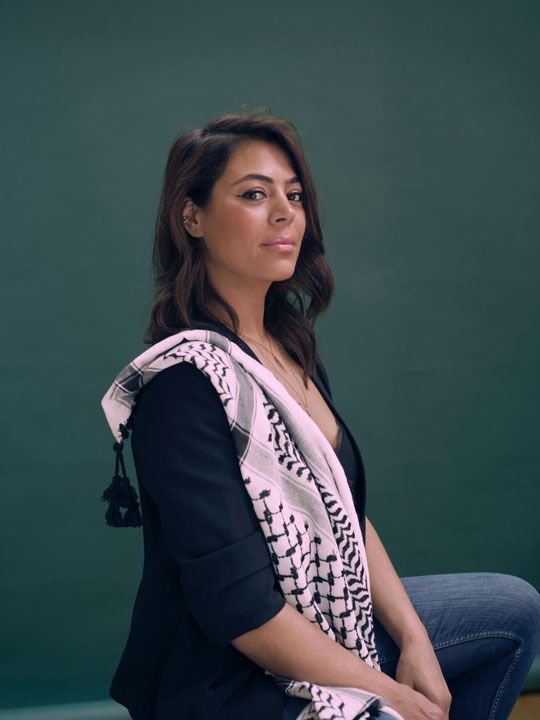
Image Credit: Supplied
Techniques and traditions
Palestine plates offer up a huge diversity in flavours and techniques. Tamimi says a lot of people think Palestinian food is just maqluba, which is wrong. He talks of the olive season, and food that is rooted more in olive oil and less of butter. Or maftoul, a dish that is a bit like couscous involving a handmade process that’s continuing to today. “And all the pickles and drying, the chilli paste shatta, which has been in use 200 to 300 years.”
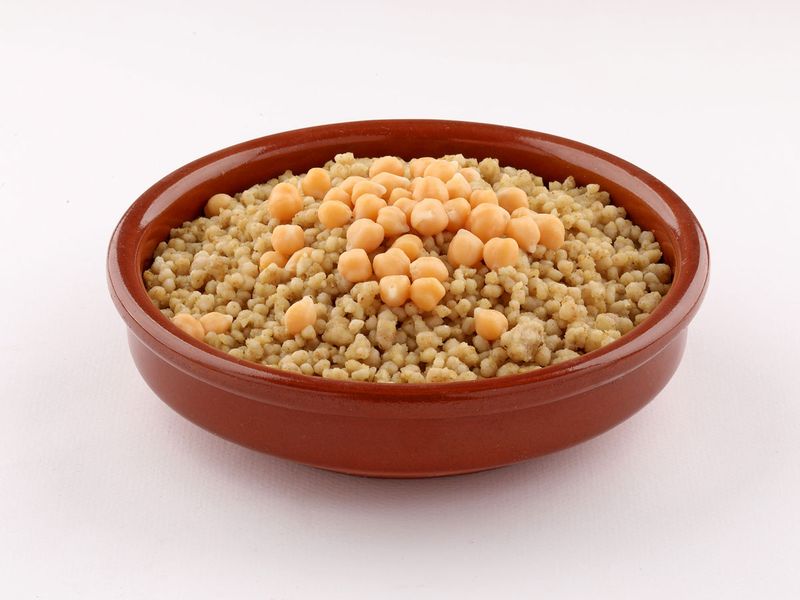
Image Credit: Shutterstock
Ancient techniques abound. Kalla lists everything from the art of making chicken musakhan to cooking on rocks to replicate the taboon oven (traditional clay oven used in the Middle East for centuries) style.
“The cuisine is also closely associated with the olive harvest and what’s around, which means a lot of onion, sumac and olive oil.”
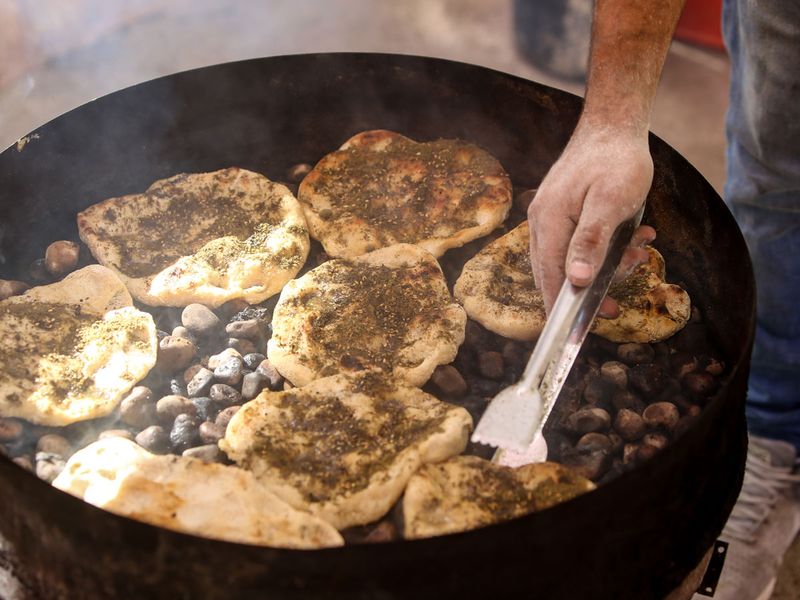
Image Credit: Shutterstock
Chef Dakkak adds proper sautéing of onions as a base to almost all Palestinian dishes. “Not to forget properly stirring the yoghurt constantly while it is on low heat, because the cuisine consists of a lot of dishes made with cooked yogurt.”
She says the most prominent Palestinian culinary tradition is Friday morning breakfast, consisting of simple sides such as labneh and zaatar and olive oil as well as some main courses including foul (beans cooked with lemon olive oil and garlic), and falafel, and served with taboon or ma’arook bread. “Breakfast on the morning of Eid Al Fitr at the end of Ramadan is even more special as it consists of coffee or tea served with ma’amoul (small pastries stuffed with dates or pistachio or other types of nuts) and kunafa. Lunch on the day of Eid Al Adha is also a very valuable culinary tradition as it includes grills from the freshly slaughtered lambs that morning.”
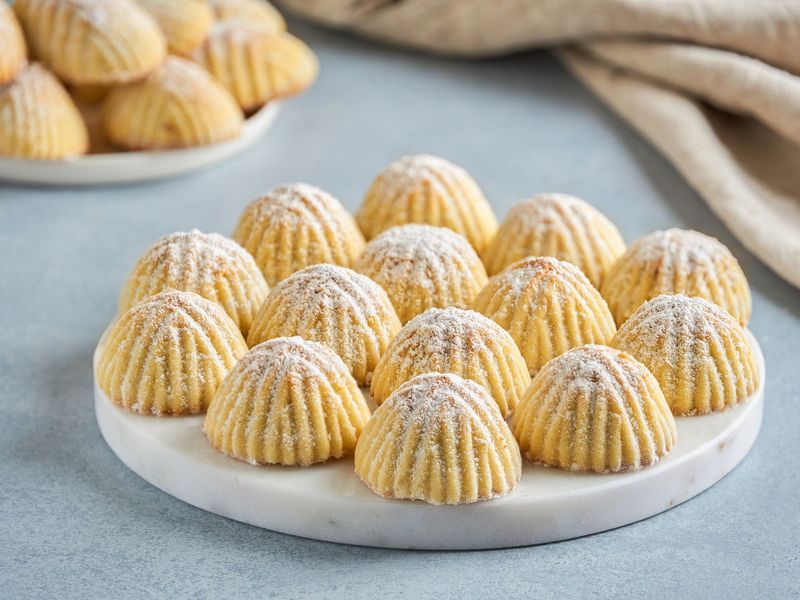
Image Credit: Shutterstock
Cooking’s a communal affair
Even more than dishes that are fading from memory, for a lot of Palestinians what hurts the most is the near disappearance of the community affair that cooking was, often involving not just the family but the neighbourhood as a whole. For Salam, one of her favourite memories of Palestinian food from her childhood is during Ramadan nights when her mother would swap dishes with their neighbours. “She would share a portion of the dish she cooked, and the neighbours would send over a portion of the dishes they cooked. It would add so many different flavours to the dinner table. And during the holidays, the whole neighbourhood would get together to make maamoul and kaek (semolina-based cookies) – traditional desserts eaten only during the holidays – for each family to have ready when the holiday comes.”
Kalla, who now holds cooking classes in London, rues the pandemic’s effect on the community-style cooking that characterised Palestinian cooking. “All the dishes I teach now take a long time, and we forget, because we’re so displaced from each other due to Covid, that all these dishes were made with mums and aunts and uncles and brothers and sisters and friends all together. Now we’re having to make them alone. That’s one of the traditions I’m trying to get back, hopefully once we’re out of restrictions.”
Tamimi says while Palestine is but a small country, in the past regions had their own kind of specialty, like influences in the North of Syrian and Lebanese food due to proximity to the country, influences that are not true for the rest of the country. “The North is close to the shore so there’s quite a lot of seafood. Meanwhile, Bethlehem has a heavy reliance on bread and dairy products and yoghurt and milk. Nablus is very well known for sweet things and kunafa and baklava. In Hebron now we have quite a lot of lamb and goat, but also the best grapes in the country – we don’t do wine but instead a lot of lovely dishes from grapes.”
Kalla labels Palestine as lots of little countries in terms of cuisine. “My dad is from the north and what features very heavily on their plates are rice, grain, lamb, yoghurt and meat dishes as it’s much colder there. Once they got married and my dad saw what my mum ate he asked if she was really Palestinian! Because being from the coast all the food she was eating was light and summery and fresh, all very spicy, tangy and lemony with a lot of the chilli paste shatta.”
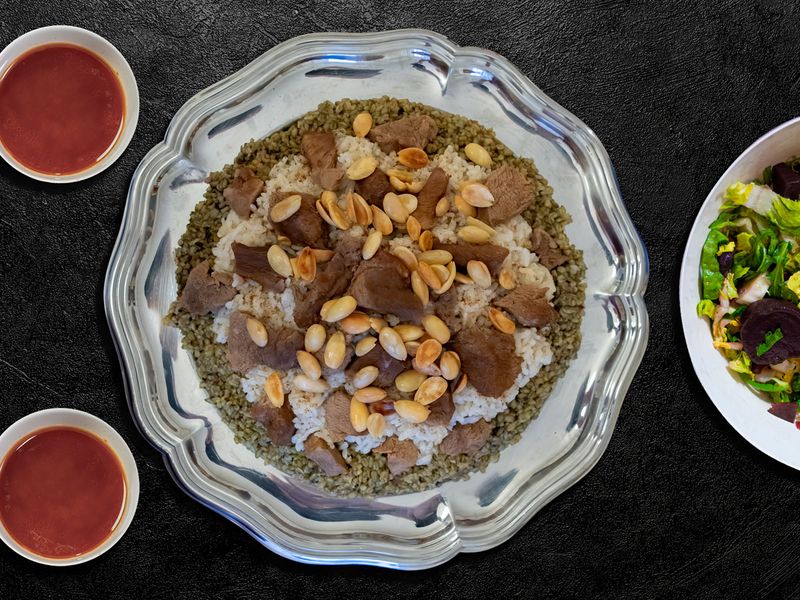
Image Credit: Shutterstock
The tradition vs modernity battle
Despite its many influences, Palestinian cuisine has been slow to evolve. Culinary adventures and progression take a backseat to traditional ingredients and methods in a fare that’s mostly home-cooked. Tamimi says the cuisine has more or less been at a standstill for the last 100-120 years, and a lot of this has to do with the political conflict the country has faced and continues to face. Which meant food became a way of preserving culture “as it moved from one generation to the next,” says Tamimi. “Access – or the lack of it – to certain herbs and spices matters too. Which means it’s more or less the same dish but called something else due to small differences in the way they prepare it. Change has mostly come through a diaspora that lives somewhere else and has had to readapt the recipe using what’s available.”
Tamimi says he always recommends a visit to a Palestinian home to experience the richness of the food culture. “A lot of Palestinian dishes aren’t adapted yet to restaurants. Musakhan is very easy to serve in restaurants as it’s just a piece of chicken. But worldwide there aren’t a lot of chefs who have taken this cuisine and adapted it to suit a restaurant – because Palestinian food like many other cuisines is cooked to share, not cooked by portions, and it’s one big dish in the middle and salads and pickles on the side. You can borrow elements of Palestinian cuisine but it’s a huge repertoire and so difficult to serve in a restaurant.”
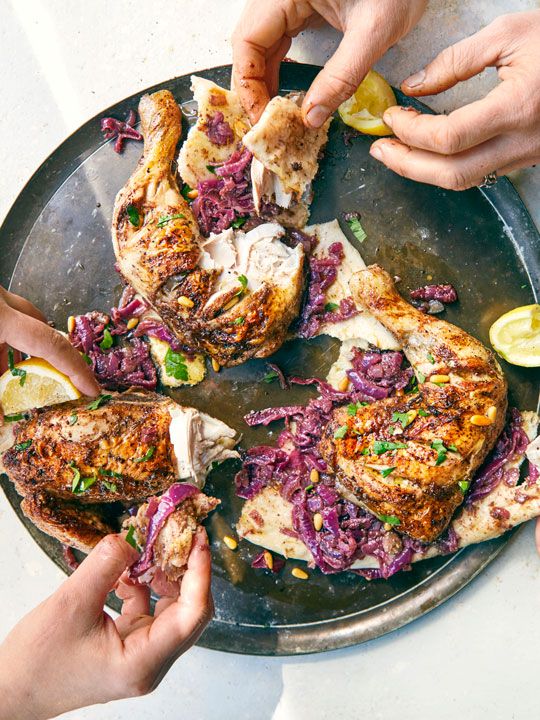
Image Credit: Jenny Zarins
Living in London, Kalla tries to make Palestinian food more accessible, with shortcuts to ease and speed up things and “help people not slave in the kitchen, because our lives are so different from when our mums and grandmums were in the kitchen. I experiment with a lot of dishes – tahini brownies, labneh chocolate cake, cake with freekeh and figs. And I do say these dishes are not authentic, but they use authentic ingredients, with the essence of Palestine in it, but with different styles. Does that make it not Palestinian? No. It’s just a quirky take on it. I don’t like the word modernise, because our cuisine doesn’t need to be modern, it just needs to be fun and delicious while staying true to our heritage.”
Tamimi stands by a mixed approach. “When I’m homesick I cook traditional food and I love it, but as a chef I get a bit bored making the same set of dishes over and over again. Plus, what’s sentimental to me is not necessarily sentimental for other people.
“A lot of people might disagree with me but what I don’t like about adaptation and fusion is what a lot of chefs like to do – making Western food with elements of Palestinian. You either go all the way or you don’t. People who want to eat Palestinian food go back to wanting their mother’s or grandmother’s cooking, and they don’t want changes. I’m with the change because our cuisine is wonderful and it needs to be evolving to make it resilient.”
Some of Tamimi’s favourites to play around with are a savoury rice pudding topped with very crispy cauliflower, lots of garlic and herbs, called Labaniet Al Zahar – “a bit like risotto but instead of cream and cheese we use fermented yoghurt or normal yoghurt. Typical Palestinian and looks impressive as well.”
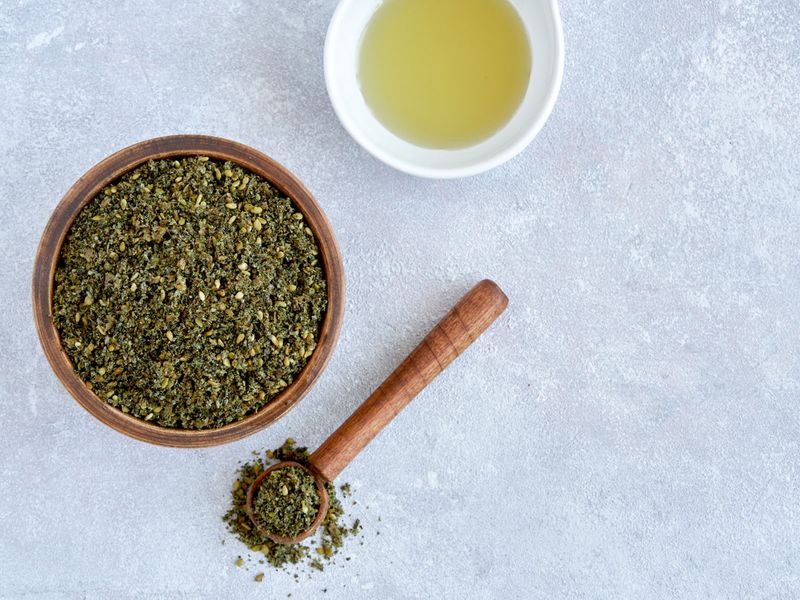
Image Credit: Shutterstock
Dakkak cites the UAE as an example of embracing the old with the new, propelled by three segments of the population. “Palestinian cuisine is quite popular in the UAE, and its popularity is not just because of the Palestinians living away from home, but also expats of other Arab countries, plus Western expats as well. Arabs of other nationalities appreciate food in restaurants that reminds them of home and their own mother’s cooking. On the other hand Western expats appreciate trying Middle Eastern cuisine that is not commercialised, and love trying food that is specific to Palestine and is new to them even if they’ve lived here a long time.”
Take the fatet mshakkhan, one of the most ordered dishes at her restaurant. “This dish is a fairly new concept I created that comes from a traditional dish, musakkan, but done in a style that is also unique to Palestinian cuisine, which is the fatteh [Arabic for crushed or crumbs]. It sits high in popularity alongside the very traditional dish of warak einab, which is grape leaves stuffed with rice and meat and served with stuffed cousa (squash). It’s quite tough to find a warak einab done properly in a restaurant the way it’s done at home.”
Traditional meat-heavy dishes form a mainstay of the cuisine, so much so that the cuisine has started identifying itself as almost exclusively non-vegetarian. Tamimi says meat and rice are easy fall backs for meals in the cuisine “as you simply can’t go wrong with them, they feed a lot of people.” He cites the maqluba, as an example, whose components of rice, vegetables and meat can feed up to 15 people at a time. “Because meat was not accessible in the past it is almost like an obsession now – a lot of Palestinians couldn’t afford meat when they were kids, and now that it’s so cheap they’ll get a lot of it and feed their guests. We definitely eat a lot more meat than was eaten in the past. I’m 53 and we didn’t have any other red meat besides lamb, and we mainly lived on vegetarian food.”

Image Credit: Ahmed Ramzan/Gulf News
And the cuisine offers plenty of that, with stews packed with a variety of vegetables from carrots to cauliflower to courgette (and a little meat), made with jameed, which is fermented yoghurt. “Okra cooked in a very rich tomatoey sauce, with a tadka [oil with dried spices and aromatics] similar to Indian food is a popular dish too.”
Salam mentions some of the traditional dishes that were common in the Palestinian middle class such as fotoot (a special bread eaten with Nabulsi cheese), rommaniyeh (pomegranate seeds with eggplant and lentil), bisara (fava beans with dried molokhia). “The new generations don’t even know what these dishes are so I fear they will disappear. Another dish which I fear is a disappearing is Akkoub. This is a type of green vegetable that is very unique, the only way I can describe it is it’s a mix between asparagus and broccoli – but tastes much better than both! It is cooked in several different ways, either as a stew with yogurt or sauteed with garlic and cilantro and served with rice on the side. It is not very common anymore and the vegetable itself is quite difficult to find and only grows in Palestine and Jordan, and very small areas of Syria and Lebanon.”
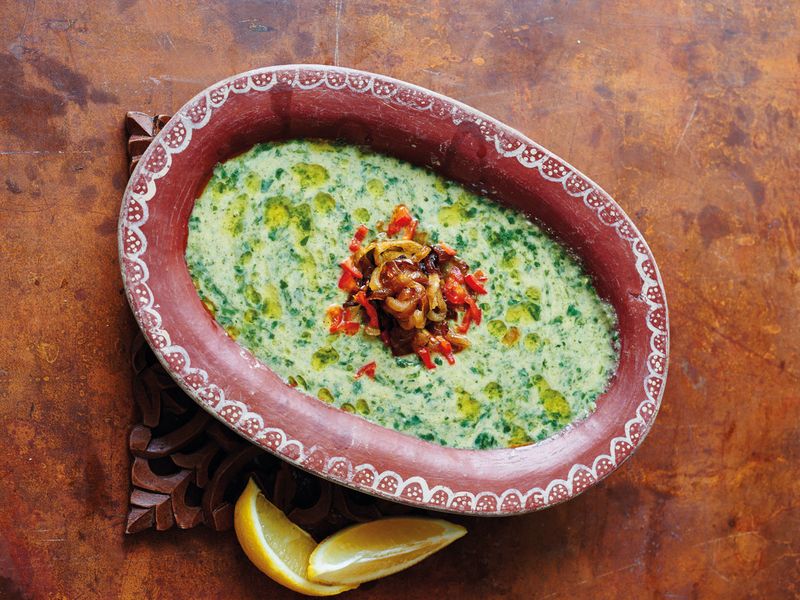
Image Credit: Recipe from Palestine on a Plate/Joudie Kalla
Kalla talks of a cake made of qizha, a black nigella seed paste, very much loved and eaten all over Palestine and so delicious, but the generations that were making it died and they didn’t pass on recipes and people didn’t attempt to learn them. “In Islam they’re called the seeds of blessing, and are said to cure most things. Also Bissara, an old style dish that my aunty is her late 90s remembers it, but no one eats it anymore – it’s simple to make, very cheap, of broad beans and dried molokhia and onions and chilli and garlic. I try to resurrect these dishes because they’re good and taste great and are affordable for everybody, not to mention healthy.”
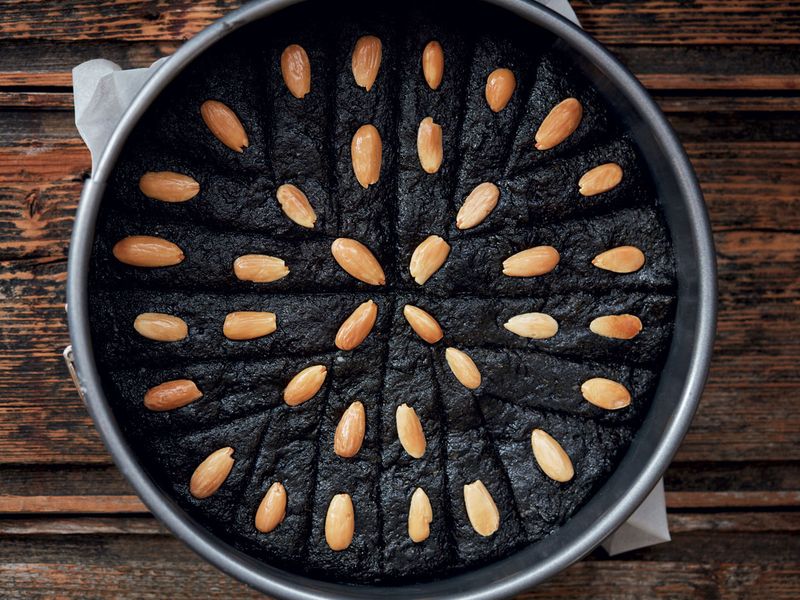
Image Credit: Recipe from Baladi/Joudie Kalla
Tamimi feels the younger generation both want the cake and to eat it too. “Put simply, they don’t want to cook. This is a shame because a lot of the dishes that take time to prepare are cooked less and less, which is why there’s a lot of maqluba cooked because it’s in one pot and easy. Our mums were housewives and had a lot of time, but with balancing careers, obviously something’s gotta give.”
While the cuisine is on show globally and available in many different countries, it still suffers from lower visibility and limited reach – and an oversimplification under the label “Middle Eastern cuisine.”
Dakkak mentions the commercialisation of Middle Eastern cuisine. “It has become known more for the grills and the mezza’s rather than the traditional home-cooked dishes.”
Kalla says people are sitting up and paying attention. “It is a beautiful cuisine and has a big history, so we have to acknowledge that and recognise our ancestors and their sacrifices to help us get to where we are, and we have to remember them and their foods. This is their identity.”
Tell us about your favourite dishes or recipes at [email protected]

